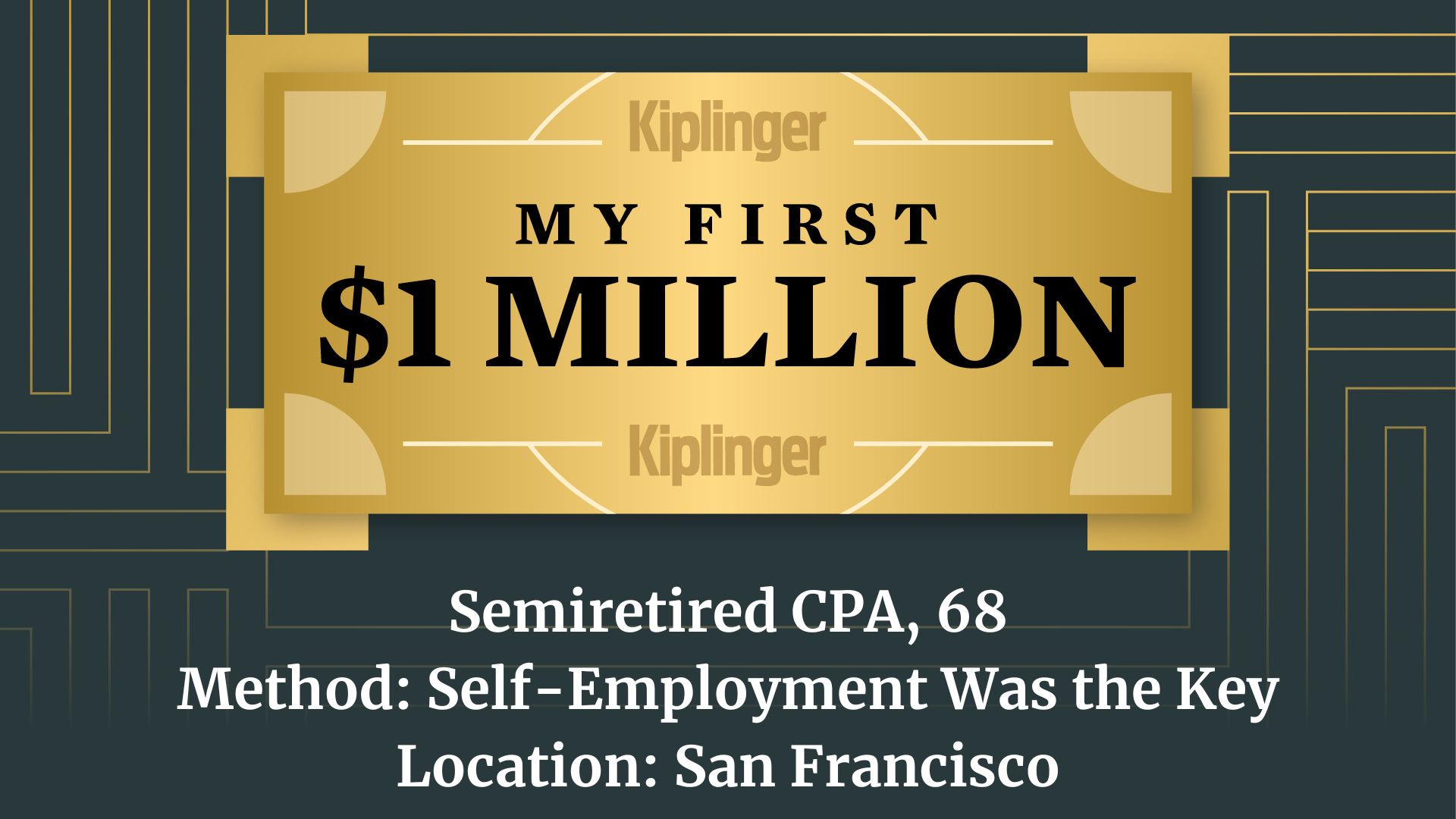Income Planning to Help You Win the Retirement Trifecta
With a retirement income plan that focuses on the allocation of income, and delivers lower fees and taxes, you can increase your income with less risk even as you increase your family’s legacy.


More income, less risk and a bigger legacy to pass down to your family: Can you really “have it all” when it comes to retirement planning? Yes, but this type of successful planning requires innovation. Come with me as I examine some new thinking when it comes to your retirement finances.
For a long time, it was thought that an encyclopedia could not at once be authoritative, comprehensive and current. At least one of the three important qualities had to give. Then came the internet, and the “trilemma” of the encyclopedia disappeared. But philosophers enjoy the concept that only two out of three objectives for a single concept can be attained, and there are trilemmas posed for religious beliefs, politics, economics — and even triathlons.
The common trilemma for retirement income is thus: You can create spendable income, enjoy low risk or build a legacy for your heirs. Pick two and let the other one go.
From just $107.88 $24.99 for Kiplinger Personal Finance
Become a smarter, better informed investor. Subscribe from just $107.88 $24.99, plus get up to 4 Special Issues

Sign up for Kiplinger’s Free Newsletters
Profit and prosper with the best of expert advice on investing, taxes, retirement, personal finance and more - straight to your e-mail.
Profit and prosper with the best of expert advice - straight to your e-mail.
I contend that this trilemma, just like the one about the encyclopedia, has outlived its usefulness.
Start with Retirement Income Planning
An Income Allocation plan for retirement offers a trinity of planning features: Your plan will integrate annuity payments into your income stream, lower your fees and taxes, and expose your income to lower risk.
With these three features, you can in fact achieve higher spendable income, decrease your income risk and achieve a greater legacy. (Important note: Legacy is defined as the amount available to your heirs, after tax, at your passing later in retirement.)
Here’s how to solve the retirement trilemma:
Higher Income: A mix of guaranteed and other safe income, together with withdrawals subject to reasonable market risk, is the best way to create income during retirement. I suggest annuity payments as a way to provide a high level of guaranteed income that lasts a lifetime. Combine that with dividends, interest and IRA withdrawals, along with Social Security payments and a pension, if you are lucky enough to have one. Allocating your income among these major income sources provides a reliable stream of lifetime cash flow substantially higher than withdrawals from traditional asset allocation planning.
Lower Income Risk: When annuity payments, dividends and interest make up a major share of your income, you will be less dependent on IRA withdrawals, which in turn are dependent on the ups and downs of a portfolio invested in stocks and bonds. (You may also have a buffer portfolio of short-term investments that could be a temporary parking place for these withdrawals.) To further reduce volatility in your Income Allocation plan, you should make a conservative assumption as to the long-term market returns in setting your plan’s income and required withdrawals. If you actively manage your plan once it is set up, you will be surprised at how small the market impact on your income will be — primarily because so little of the income is dependent on the market.
Maintain a Legacy: In traditional retirement income planning, the advice is often to spend down your savings from a portfolio of stocks and bonds, leaving you with the risk of running out of money. Very few retirees in this current low-interest environment are able to live off interest and dividends and leave the full current value of the underlying bonds and stocks as a legacy at their passing. And it may seem counterintuitive that including annuity payments with no underlying account value in a retirement plan can provide your heirs with a significant legacy. But starting with the first two — higher income and lower risk — here’s how you can solve the trilemma with Income Allocation planning.
Your Income, Risk Reduction and Fee/Tax Savings Solves the Trilemma
Under the traditional asset allocation retirement model, an adviser will help you determine a retirement budget, and then guesstimate how long your savings can pay for that lifestyle. If the calculations show you will run out of money too soon, the advice will be to lower your budget.
An Income Allocation plan, on the other hand, generates income of 30% to 50% more than a traditional plan. The tradeoff, however, is that the legacy value under such an income-rich plan is often lower than the legacy of a traditional plan. But you will see here that it doesn’t have to be that way. Decisions you make with your higher income can deliver more of a financial legacy, without increasing your income risk.
Increase Your Legacy Using a Portion of Your Higher Income as a Legacy Share
- Take the “legacy share” from your higher income to buy life insurance or long-term care insurance, thus increasing or preserving the legacy.
- Reinvest your legacy share in tax-efficient accounts; consider accounts like a Roth IRA or health savings account.
- Make gifts of your legacy share during your lifetime to create a living legacy.
Reduce Taxes During Retirement and at Your Passing
- Reduce your retirement tax rate from tax-advantaged income in the form of annuity payments and dividends.
- Reduce your legacy tax rate and wherever possible leave heirs with accounts that receive a step-up in basis at death, such as a Roth IRA or a portfolio of stocks.
Improve Long-Term Investment Returns Because of Lower Income Risk
- Because you aren’t relying on investments for your guaranteed income, when market volatility hits you can feel confident enough to stay the course without overreacting to the ups and downs. This helps improve your investment returns over time.
- Increase your allocation to high-dividend stocks in your accounts holding personal (after-tax) retirement savings generating both tax-favored income and potential for capital appreciation.
- Increase your allocation to total-return stocks in a balanced portfolio within your IRA retirement savings. Together with an allocation to fixed income, they can be a smart allocation for your IRA withdrawals.
Lower Fees to Increase Growth of Financial Legacy
- Closely examine your investment accounts and the level of advisory fees. These will have a dramatic effect on your income and legacy. It may be time to move money out of high-fee accounts.
- Also, for diversification, consider low-cost ETFs and direct indexing portfolios to lower your investment fees.
It’s Not Wishful Thinking. Here’s an Example.
Let me give you a simple example for a female retiree, age 70, who has $2 million in savings with 50% in an IRA, assuming a long-term return in the stock market of 6%. Below is a comparison of Income Allocation planning vs. traditional asset allocation planning.
Plan 1: If our retiree uses Income Allocation planning to focus on generating more income during her lifetime, you can see that she will earn dramatically more than with an asset allocation plan. It translates to a 65% advantage, and with less risk. On the other hand, the legacy under this plan is significantly lower than under the traditional plan. So, she’s covered two parts of the trilemma — more income and less risk — but not the third.
Plan 2: However, with the comfort of knowing she has this lifetime income advantage, our retiree can invest $20,000 of her income per year (growing by 2% per year) toward her legacy by putting that cash in an investment account designed for tax-advantaged growth.

When doing so, she sees her legacy investment account grow while still having an advantage in spendable income. (The Income Allocation plan has significant income tax advantages, particularly early in retirement.) Of course, she can stop adding to the legacy investment account, or even withdraw funds, if the need arises. Our retiree just won the trifecta.
With her new Income Allocation plan, our investor solved the “Trilemma of Retirement” with more income, less income risk and more legacy.
Bottom Line
Everyone planning for retirement will have different financial goals and objectives. An Income Allocation approach works, because with more income and lower risk you’re in control of your destiny.
Sounds like a perfect New Year’s resolution.
Find out more about how to meet all your goals. Visit Go2Income for more information on how Income Allocation can help you balance your retirement priorities or contact me to discuss your situation.
Profit and prosper with the best of Kiplinger's advice on investing, taxes, retirement, personal finance and much more. Delivered daily. Enter your email in the box and click Sign Me Up.

Jerry Golden is the founder and CEO of Golden Retirement Advisors Inc. He specializes in helping consumers create retirement plans that provide income that cannot be outlived. Find out more at Go2income.com, where consumers can explore all types of income annuity options, anonymously and at no cost.
-
 10 Cheapest Places to Live in Washington
10 Cheapest Places to Live in WashingtonProperty Tax Is Washington your go-to ski destination? These counties combine no income tax with the lowest property tax bills in the state.
-
 Healthy to 100: Secrets from Countries Where Retirees Age Best
Healthy to 100: Secrets from Countries Where Retirees Age BestLongevity is a team sport, according to author Ken Stern. Here's the secret sauce for living long, healthy lives from countries like Italy and Japan.
-
 My First $1 Million: Semiretired CPA, 68, San Francisco
My First $1 Million: Semiretired CPA, 68, San FranciscoEver wonder how someone who's made a million dollars or more did it? Kiplinger's My First $1 Million series uncovers the answers.
-
 6 Overlooked Areas That Can Make or Break Your Retirement, From a Retirement Adviser
6 Overlooked Areas That Can Make or Break Your Retirement, From a Retirement AdviserIf you're heading into retirement with scattered and uncertain plans, distilling them into these six areas can ensure you thrive in later life.
-
 I'm a Wealth Adviser: These Are the 7 Risks Your Retirement Plan Should Address
I'm a Wealth Adviser: These Are the 7 Risks Your Retirement Plan Should AddressYour retirement needs to be able to withstand several major threats, including inflation, longevity, long-term care costs, market swings and more.
-
 High-Net-Worth Retirees: Don't Overlook These Benefits of Social Security
High-Net-Worth Retirees: Don't Overlook These Benefits of Social SecurityWealthy retirees often overlook Social Security. But timed properly, it can drive tax efficiency, keep Medicare costs in check and strengthen your legacy.
-
 Do You Have an Insurance Coverage Gap for Your Valuables? You May Be Surprised to Learn You Do
Do You Have an Insurance Coverage Gap for Your Valuables? You May Be Surprised to Learn You DoStandard homeowners insurance usually has strict limits on high-value items, so you should formally "schedule" these valuable possessions with your insurer.
-
 8 Practical Ways to Declutter Your Life in 2026: A Retirement 'Non-Resolution' Checklist
8 Practical Ways to Declutter Your Life in 2026: A Retirement 'Non-Resolution' ChecklistHere's how to stop wasting your energy on things that don't enhance your new chapter and focus on the things that do.
-
 To Retire Rich, Stop Chasing Huge Returns and Do This Instead, Courtesy of a Financial Planner
To Retire Rich, Stop Chasing Huge Returns and Do This Instead, Courtesy of a Financial PlannerSaving a large percentage of your income, minimizing taxes and keeping spending in check can offer a more realistic path to retiring rich.
-
 New Year, New Retirement Rules: Here's How You Can Keep Up as the Landscape Changes
New Year, New Retirement Rules: Here's How You Can Keep Up as the Landscape ChangesFor a successful modern retirement, prepare for a longer life, manage high health care costs and prioritize your social life and purpose.
-
 7 Creative Ways to Spend Less and Save More In Retirement, Courtesy of a Financial Pro
7 Creative Ways to Spend Less and Save More In Retirement, Courtesy of a Financial ProWorried you won't have enough money later in life? Try redesigning your vision of retirement, and you may find your savings go further than you thought.